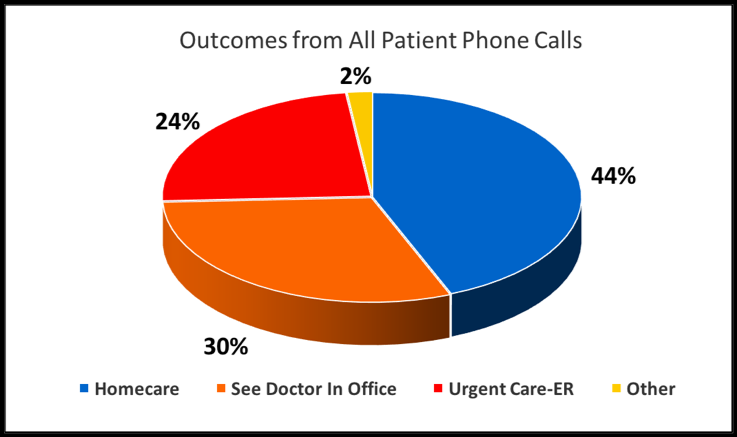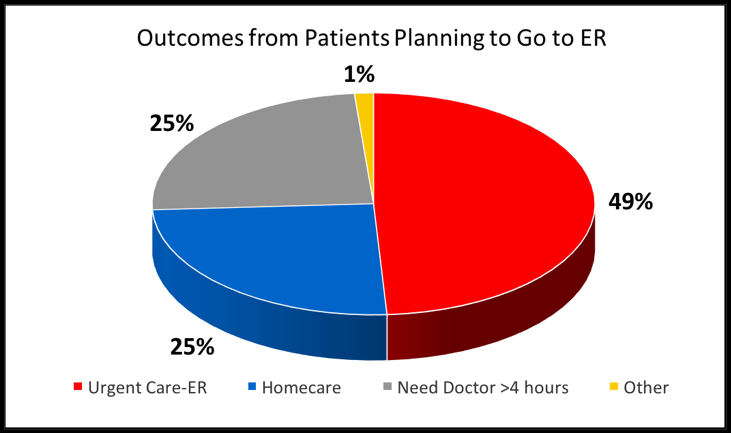From Medicare to private insurance, the reimbursements for the delivery of medicine is changing for most practices, and doctors are looking for ways to save healthcare costs while continuing to give a high quality of care to their patients. One place to easily save costs is to decrease the number of unnecessary Emergency Room (ER) visits. A trusted nurse triage service that represents the doctor’s office is an easy way to start.
A good nurse triage program that works for the doctors when the office is closed decreases patient leakage and ensures continuity of care. Nurses evaluate patient symptoms using standardized protocols from Dr. Schmitt (pediatrics) and Dr. Thompson (adult). Patients are able to get advice even when their doctor is not available, and nurses are able to guide them to appropriate levels of care. Last week we wrote about how a nurse triage program can decrease patient morbidity and mortality. This article focuses on the healthcare cost savings from a nurse triage program.
Outcomes from Patient Callers
We study data from our nurse triage on-call centers for the months of August and September 2019, where our nurses triaged about 11,000 callers. 44% of the calls were symptoms that could be treated at home with no additional doctor visit needed. These included for example, patients calling with questions on medications, or patients who have children over 3 months old with light fever.
In addition to the patients given home advice, another 30% were advised to see their doctors within the next few days with no urgent care needed. About 2,600 callers needed to go to the ER right away. Graph 1 breaks down the outcomes from the nurse triage interaction with patients.
Graph 1

Outcomes from Patients Who Planned to go to the ER
In addition to looking at all the disposition data from the nurse triage group, we also wanted to understand if triage nurses were able to save healthcare dollars by avoiding unnecessary medical expense. During the nurse triage interaction, we included a survey to all of the callers to ask them if they were planning to go to the ER prior to speaking to the triage nurse. From the survey, we evaluated the patients that were planning to go to the ER prior to speaking to a triage nurse and considered how many of those were actually sent to the ER.
About 2,900 of patients surveyed told us that they would have gone to the ER if they could not speak to a triage nurse. Surprisingly, only about half (1,400) of those patients were sent to the ER by the triage nurse.
More interestingly, though, were the patients that did not require a costly ER visit. For the patients that were diverted from the ER, a quarter of patients, (725), only needed home care. Further, another 25% only needed to be seen by their doctor in the next three days. For both of these groups, value came not only in the help provided via the triage itself, but from the guidance that provided callers with appropriate triage levels of care and saved unnecessary ER visits. Graph 2 presents the outcomes from these patients who were planning to go to the ER.
Graph 2

Conclusion
The data above indicates that doctors and practices can save on healthcare dollars by having qualified triage nurses assess patient symptoms and triage them to the correct disposition. Giving patients access to a qualified nurse triage professional 24/7 even on holidays can help patients by giving them appropriate advice to address their symptoms. This in turn saves unnecessary healthcare expenses as this article shows and it also saves morbidity and mortality. In addition, callers tend to be more comfortable calling a triage nurse that works with their doctors because the nurse can interact as an extension of the doctor.
Contact us if you are interested in having our triage nurses work with your doctors.






